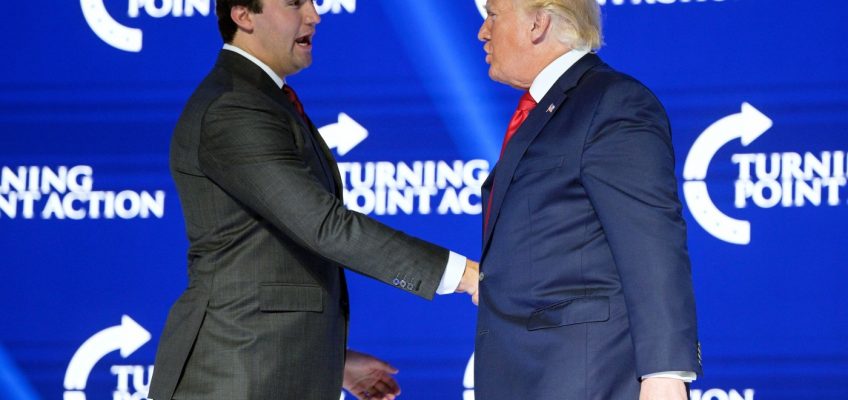Neither Minnesota Wild general manager Bill Guerin nor the camp representing star forward Kirill Kaprizov are saying much after the team’s potentially history-making first contract offer was reportedly rejected.
Speaking on the 10K Takes podcast this week, Guerin urged that Wild fans stay calm, saying he feels the team is “still in a really positive place with Kirill.”
The team would clearly like to have a deal in place before Game 1 of the regular season — Thursday, Oct. 9 in St. Louis — for multiple reasons. But if an impasse is reached, the nuclear option for Guerin and the Wild would be to explore an in-season trade and see what they can for Kaprizov rather than watch him walk away with no benefit, immediate or long-term, to the franchise.
Pittsburgh Penguins’ Bill Guerin celebrates his goal against the Philadelphia Flyers during the first period of an NHL hockey game in Pittsburgh on Tuesday, Dec. 15, 2009. The previous spring. he was traded from the New York Islanders and helped the Penguins win a Stanley Cup. (AP Photo/Gene J. Puskar)
It’s a scenario Guerin knows from first-hand experience. In March of 2009, when he was captain of the New York Islanders, Guerin was traded to the Pittsburgh Penguins and won his second career Stanley Cup there a few months later. The Islanders got what became a third-round draft pick in exchange for Guerin.
For Wild fans, one more potentially troublesome factor iis the history of moves like that one. In general, teams that acquire a star player do better in the short term than the team getting multiple role players and draft picks in exchange for one top-level asset.
The Wild are likely a long way from even considering that idea for Kaprizov, who has been the offensive leader since he joined the team for the 2020-21 season — 185 goals and 386 points in 319 games — but if he were to waive his no-movement clause and allow the Wild to shop him around, he would command considerably more than a third-round pick.
Big names in new places
Just last season, the Colorado Avalanche reached an impasse with their leading scorer, star forward Mikko Rantanen, who was in the final year of his contract with the team. Rather than see him walk away as a free agent last summer, Colorado traded Rantanen to the Carolina Hurricanes in January. In return, the Avalanche received two players and two draft picks.
Rantanen’s tenure in Raleigh was barely long enough to sell any replica sweaters. He also was unable to reach a long-term contract agreement with the Hurricanes and was traded again, to Dallas, after just 13 games in Carolina. Worse, Rantanen and the Stars wound up eliminating Colorado in Round 2 of the NHL playoffs last spring.
It was medical treatment, less than money, that prompted the Buffalo Sabres to unload their biggest star, former Hobey Baker winner Jack Eichel, to the Vegas Golden Knights in November 2021.
After being the second overall pick in the 2015 NHL Draft behind Oilers superstar Connor McDavid, Eichel had put up impressive numbers for a Sabres team that was going nowhere. After injuries cost Eichel much of the previous season, and he was at loggerheads with Buffalo management about his best path back to good health, the Sabres sent him to Vegas in exchange for two players and two high draft picks.
Buffalo remains solidly on the outside of the playoff picture, and Eichel was a key factor in the Golden Knights’ winning their first Stanley Cup in 2023.
San Jose Sharks’ Joe Thornton is pictured during an NHL hockey game against his former team the Boston Bruins on Oct. 29, 2019, in Boston. Traded to San Jose in 2005, the center later helped the Sharks reach the Stanley Cup final. (AP Photo/Winslow Townson)
Moves with mixed results
Two decades ago, star defenseman Joe Thornton forced his way out of Boston, and the Bruins traded the former first overall draft pick to San Jose for a trio of regulars — Marco Sturm, Wayne Primeau and Brad Stuart. One could argue that the trade was a win for Boston, which won a Stanley Cup six years later, while the Sharks reached the final once with Thornton but still have no NHL titles on their resume. But Sturm, Primeau and Stuart were all employed elsewhere by the spring of 2011, when the Cup last visited Boston.
Current Islanders head coach Patrick Roy has some experience with the in-season trade game. After backstopping the Montreal Canadiens’ most recent Stanley Cup win in 1993, a strained relationship with coach Mario Tremblay blew up in December 1995 when Tremblay left Roy in the net for nine Red Wings goals in an eventual 11-1 loss to Detroit.
When Roy finally left the ice, he demonstratively told team owners seated behind the home bench that he had played his final game in Montreal. Forced to move their puck-stopping mainstay, Montreal shipped Roy to Colorado, and five months later in the spring of 1996, Roy was the defensive catalyst for the first Avalanche Stanley Cup title.
There is likely still much discussion that will be had between the Wild brass and the Kaprizov camp, but if an impasse is reached, NHL history shows there are in-season trade options. They just tend to favor the team, in this equation, that would receive Kaprizov.
Related Articles
Shipley: Not a great start to the Kirill Kaprizov negotiations
Report: Kirill Kaprizov rejects NHL-record offer from Wild
Wild owner prepared to give Kirill Kaprizov a record NHL deal
Former Wild star Zach Parise selected for US Hockey Hall of Fame
Wild, Marco Rossi agree to three-year, $15 million extension




